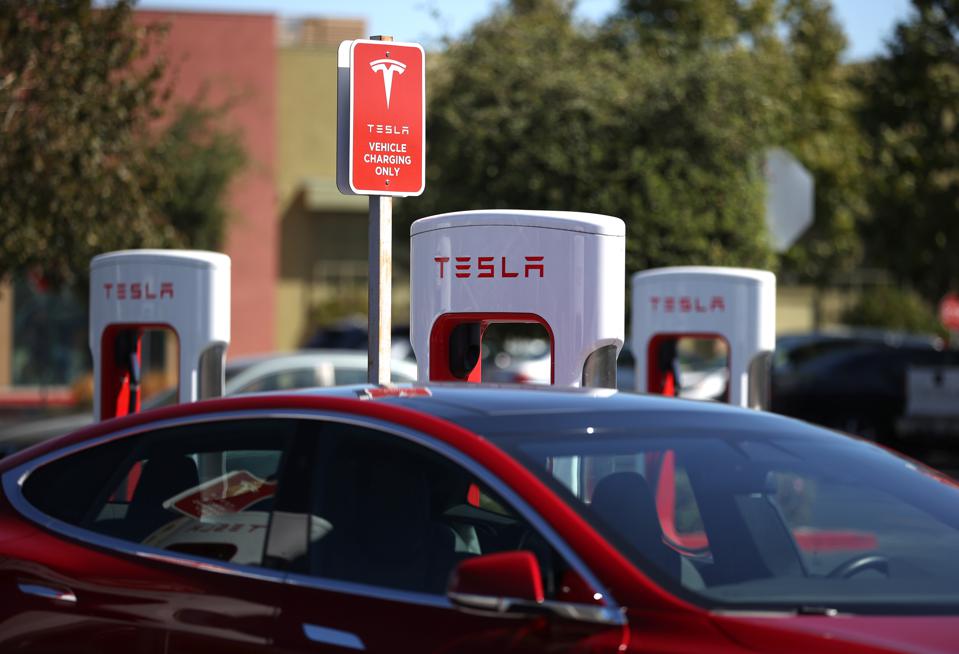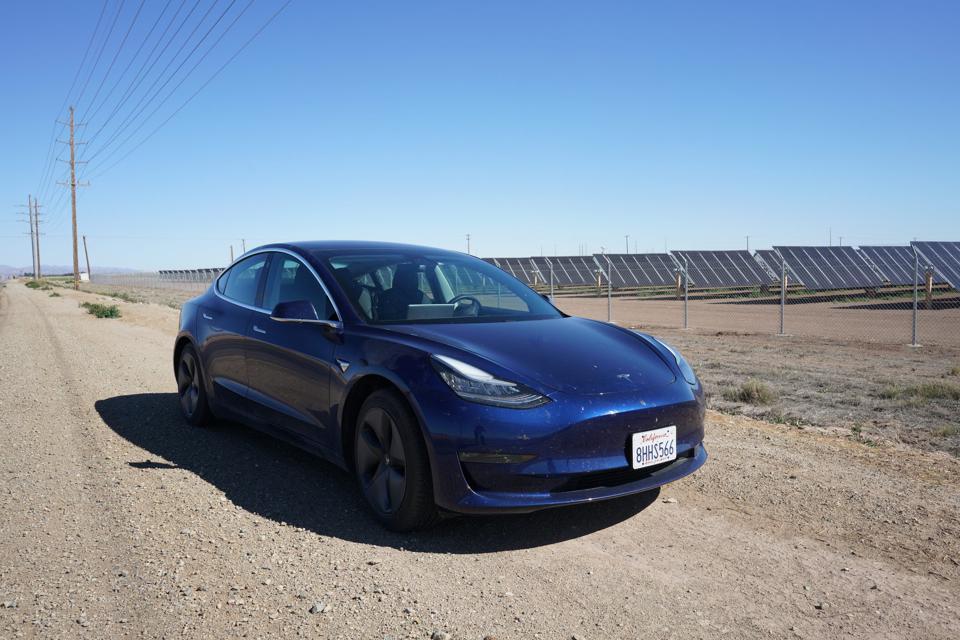
California Governor Gavin Newsom said last week that the sale of new gasoline / diesel vehicles would be banned from 2035. Similar measures have already been introduced in Germany and a number of other countries, but this is the first precedent in the United States. Is a plan for a complete transition to electric transport in just 15 years practical?
Of course, gas-powered cars will continue to exist after 2035. Used cars will last for decades, and people will be able to buy new cars out of state and ferry them to California, although restrictions may appear over time. Although 2035 is still a long way off, even now many will consider you a madman if they find out that you want to buy such a car. Electric cars are already great for the supporters of the “Zoom-zoom” ideology. Electric vehicles are more economical to operate and maintain, but they are more expensive on their own than gasoline vehicles. Also, owners of conventional cars find that electric vehicles have problems with range and charging.
Last week, Elon Musk said that Tesla will release an electric car within three years, which will cost $ 25,000. It may not be able to keep that promise, but it is clear that it will sound even better by 2035. Perhaps much better - electric vehicles are already being sold in China for $ 5,000. (I am an investor in a company that is developing a custom electric vehicle for $ 6,500 excluding subsidies.) In addition, a whole generation of used electric vehicles will be on the market by 2035 at very attractive prices. Collectors will still want to buy old-fashioned gasoline cars, and they will still have this right.
As I noted above, people who do not own an electric vehicle believe that such a vehicle has a range problem. In turn, electric vehicle owners know that modern electric vehicles, capable of traveling 322 km on a single charge, do not have this problem (when it comes to everyday city driving). However, you need to make a remark - near your house, in the parking lot, or at work you should have a charge. Currently, using an electric car is not very convenient for those people who do not fit into any of these options, as well as for people who rent an apartment and those who park on the street. However, all these are problems of today only. In 15 years, there will be many solutions, including charging at rental stations, suburban parking lots and even on the streets.
To make charging not a problem, you need to do it in those moments when you do something else. Ideal options for activities that fall into the “something else” category are sleep or work, although there are other options. Charging while sleeping takes 0 minutes out of your working day, which means it's more time-saving than refueling at a gas station.
There are only questions about electrical systems. Where do we get so much power? This question makes sense. Currently, the California electrical system produces 200 billion kWh per year, and even this is sometimes not enough - the network is overloaded and there are rolling blackouts.
Given that Californians drive about 200 billion miles each year, electric vehicles would need another 55 billion kWh per year. Of course, in 2035 there will still be gasoline cars that were sold 15 years earlier, so we may need only half of that power increase. However, sooner or later we will come to the fact that we need more. In addition, trucks will also switch to electricity, which means that another 20 billion kWh will be required per year. Thus, we will need a significant increase, but it is unlikely that it will exceed 20% (beyond what increases the power requirements for other reasons).
Solar energy must save us

Tesla electric car in front of a solar power plant in California
A revolution has taken place in the field of solar energy - solar energy has fallen significantly in price. It has become so cheap that it is now cheaper to install a solar power plant in California (compared to coal and gas). However, if you already have a gas-fired power plant, then it will be a little cheaper to burn gas - this is one of the reasons why we are discussing the growing demands for electricity. Another reason that not all power plants run on solar energy is the obvious disadvantage that this energy is not generated at night. We need energy throughout the day, which means that solar power plants will not be able to meet all our industrial and domestic needs (or we will need additional storage that will allow us to accumulate energy on sunny days and use it at night and on cloudy days).
An entire industry is tackling this problem. However, energy storage is built into all electric vehicles. This is the dream of the renewable energy industry - they can take energy when there is a surplus and rarely need it when there is not enough. It is only necessary to set the prices for energy so that its supply is cheap, and the shortage is expensive, and then the owners will set the appropriate charging modes. If energy is not cheap, then only those who really need it will be charged.
If you own a car that can travel 402 kilometers on a full charge (like mine), then you can do some simple calculations. The average car drives 19,312 km per year, which is only 53 km per day. This means that in normal driving mode, an unmanned vehicle can be operated on a full charge for a week. Of course, in real life there are stretches of more intense and less intense driving, which is why many electric vehicle owners are used to charging their vehicles while working or sleeping. Thus, their cars will be ready even for long trips for several days in a row. In the worst case, you can go to a “fast” charging station, which is not as fast as a gas station, but still does its job well. Moreover, if you call at such a station during a stop for food or shopping,then it will not take up your time.
All of this means that very few EV owners worry that they won't be able to charge their car in the event of a drawdown or power outage. In fact, all this happens only once every few years, and usually in the evening during the hot season, when many air conditioners work non-stop. Moreover, outages are warned in advance.
Recharge at night
There are two main reasons for charging at night these days. First, car owners sleep at night and their cars are parked. Secondly, due to low demand at night, electricity is cheaper. The rise of solar energy will change the second aspect, but not the first. As the volume of solar energy grows, the price of it will fall during the daytime - especially from 7:00 to 15:00, when the sun is shining well, and the peak will be at noon. However, demand has not yet reached its peak. The generated solar energy will be stored for future use, and a great way to use it is to use it in electric vehicles. (A similar technique will be used in a new generation of air conditioners that will freeze the ice when energy is cheap and use it to cool buildings when energy is expensive.)
All this does not apply to overnight charging. In other words, people are more likely to want to recharge during the day during work (or at home, if they do not need to go to work). People will continue to recharge whenever energy is cheaper - both at night and in the early morning when the sun rises before they leave for work.
The cars of 2035 will have another important feature - they will have self-driving features built into them. This means that they will be able to independently drive up to charging stations during periods of time when the price of electricity will be reduced (provided that their owners do not need them). Thus, there will be no need to install chargers in every home or office parking lot, although low-power chargers near offices and homes can satisfy most of the needs, while cars will still have the opportunity to leave for additional charging, if necessary.
Unfortunately, there is a problem with robotaxi. The greatest demand for the use of robotic taxis occurs during rush hour (from 6 to 9 am and from 15 to 19 hours), there is also a small peak in demand during lunchtime. From 3 pm to 7 pm, energy is the most expensive. At noon and 6 a.m. there will be more surplus energy - at 6 a.m. because the demand is low (despite the fact that the sunny day is just beginning), and at noon due to the fact that the sun is at its zenith. Some solar power plants even point westward in order to deliver peak power a little later - when prices are at their highest. All of this means that everyone will want to charge from 9 am to 11:30 am and from 1:30 pm to 3:00 pm - not the best charging scheme. However, some cars will charge at different times with lower prices, as the entire fleet is rarely used. Unlike passenger cars,traveling an average of 53 km, a robotic taxi will cover from 321 to 482 km per day (depending on long journeys and highway exits). And yes, if necessary, robotic taxis will be charged at night using energy from nuclear, geothermal, hydroelectric, biological and other clean sources. In particular, hydroelectric power plants will pump water back into their reservoirs at times when the price of energy will decline, that is, when machines cannot use it (for example, during the morning rush hour).will pump water back to their tanks during times when the price of energy will decline, that is, when the machines cannot use it (for example, during the morning rush hour).will pump water back to their reservoirs during times when the price of energy will decline, that is, when the machines cannot use it (for example, during the morning rush hour).
Summing up, we can say that we will cope with the new limitation. We can cope with it now, and even more so we can cope with it using the technologies of 2035. What we cannot cope with is the constant burning of gasoline (we are talking not only about CO2 emissions, but also other pollution, including ultrafine particles PM2.5, which kill thousands of people) and wars over imported oil.
- Russia's first serial control system for a dual-fuel engine with functional separation of controllers
- In a modern car, there are more lines of code than ...
- Free Online Courses in Automotive, Aerospace, Robotics and Engineering (50+)
- McKinsey: rethinking electronics software and architecture in automotive

Vacancies
, , , - .
, , , .
, , . , , , , , .
, , .
, , , .
, , . , , , , , .
, , .
- -
- -
About ITELMA
- automotive . 2500 , 650 .
, , . ( 30, ), -, -, - (DSP-) .
, . , , , . , automotive. , , .
, , . ( 30, ), -, -, - (DSP-) .
, . , , , . , automotive. , , .
List of useful publications on Habré
- - Automotive, Aerospace, (50+)
- [] (, , )
- DEF CON 2018-2019
- [] Motornet —
- 16 , 8
- open source
- McKinsey: automotive
- …